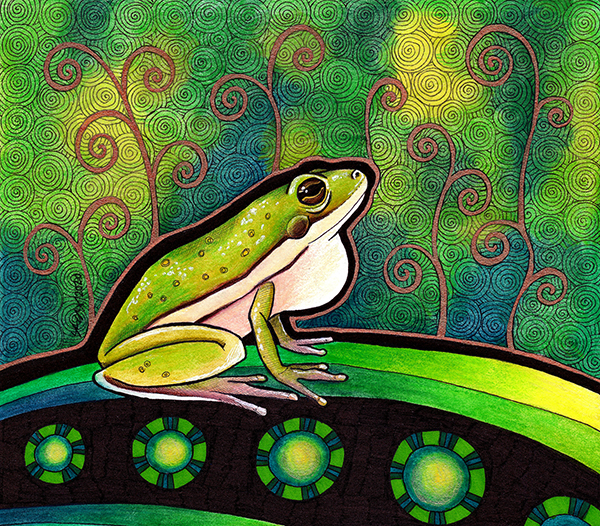American Green Tree Frog – Your Unique Voice
Keywords:
A competitive nature. Your unique voice. Health. Illness and wellness. Preferring to stay in your circle. Strong physical boundaries. Looking after yourself. Water magic. Night magic. Wetland kinship. Needing a healing place to go to. Environmentalism. Searching for meaning.
Description:
The American Green Tree Frog (Dryophytes cinereus, prev. Hyla cinerea) is an arboreal amphibian and a common carnivorous species of tree frog, found in backyards, and as pets. They are found in the central and south-eastern United States. It is the state amphibian of Georgia and Louisiana. It is often found in different shades of green, and is medium-size, it’s colouring influenced by light and temperature. Their toe pads have expanding discs that help them stick to surfaces. They are nocturnal, and usually found in wetlands that have a lot of grasses, cattails and floating vegetation, but have also been found in ponds, swimming pools, lakes, marshes and streams. They eat insects like flies, mosquitoes and crickets, and are active predators, preferring to pursue their prey. They eat more in spring and summer, and less in winter. American green tree frogs live between 2 to 5 years. They are not known to be good swimmers.
Males will call for most of the year, especially in damp or humid weather. American green tree frogs will also call for reasons other than seeking a mate or advertising themselves, such as in alarm. These frogs prefer to breed after rainfall, and males will seek as many mates as possible in a season. Females may have multiple clutches a year, but tend to only have one. Each clutch carries around 400 eggs, which take 4 to 14 days to hatch (average 5 days). Subsequent clutches always have less eggs. Breeding is influenced by the length of the day, temperature and rainfall. Neither parent cares for the eggs after laying. Tadpoles evolve into frogs over time, growing limbs and losing their gills.
When competing with species that have similar calls, American green tree frogs will alter their calls to make themselves easier to detect by mates. They are quite shy and timid, and overall do not respond well to frequent handling. Excessive handling negatively impacts their health.
Was this helpful?
0 / 0